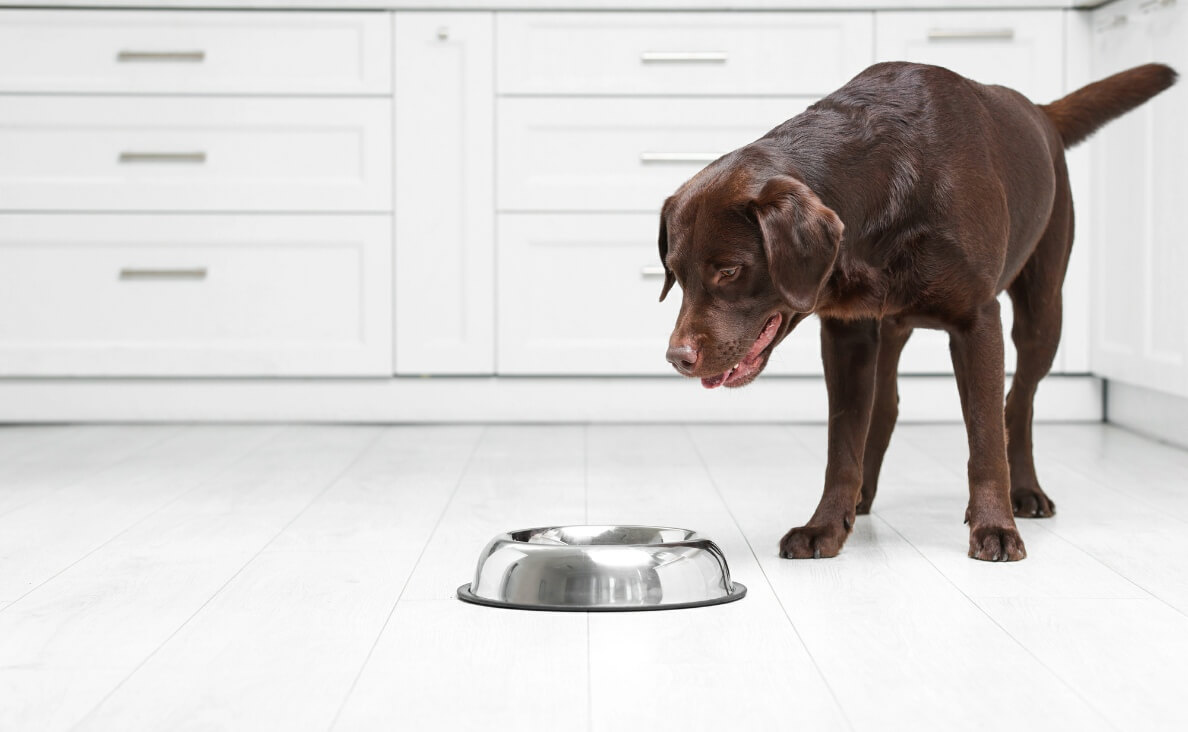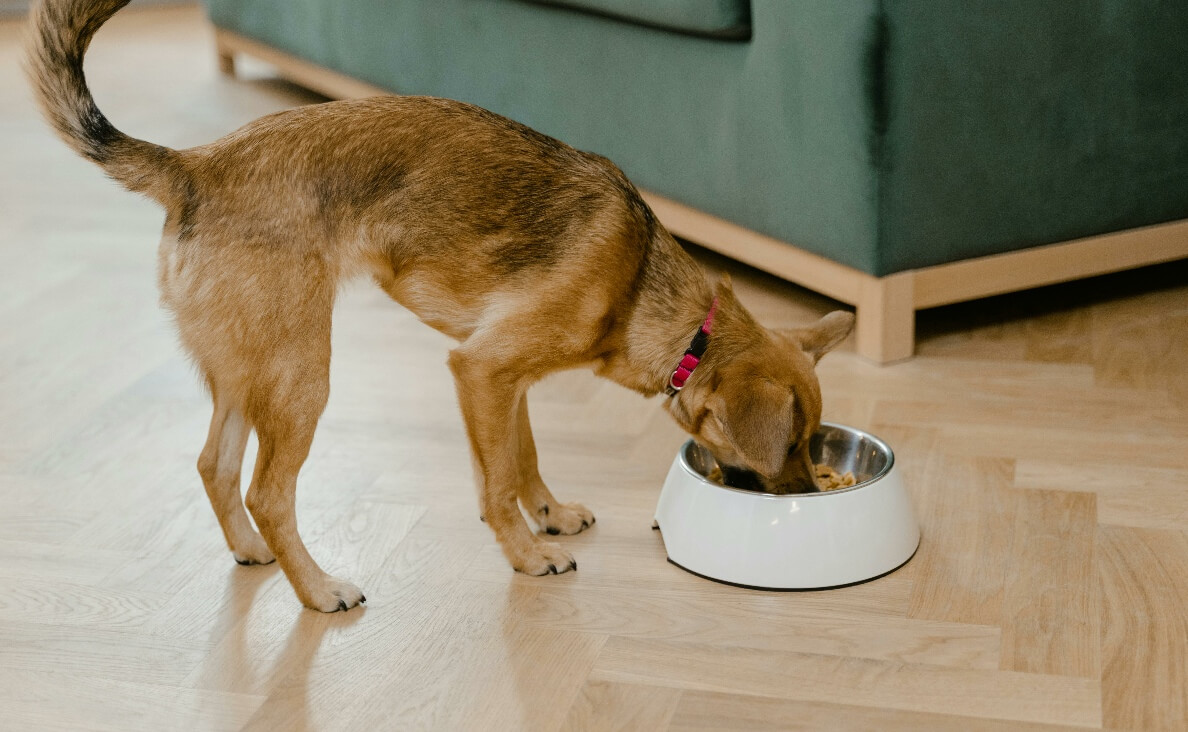
Switching your dog’s food might sound simple, but if you do it too quickly or without the right steps, it can lead to messy results—literally. From diarrhea and vomiting to a grumpy pup with an upset stomach, a sudden change in diet can disrupt your dog’s digestion and mood. Fortunately, there are proven ways to safely switch your dog’s food with minimal risk of tummy troubles.
Whether your dog is transitioning to a new life stage, dealing with allergies, or staying at a boarding facility like Canine Campus, this guide will show you how to make the switch safely and stress-free.

Why You Might Need to Switch Your Dog’s Food
There are many good reasons to switch your dog’s food:
- Your puppy is growing into an adult—or your adult dog is entering their senior years.
- Your senior dog needs a more age-appropriate formula with different nutrients and calorie levels.
- Your vet recommends a new formula due to allergies or health issues.
- You’re preparing for boarding or daycare, and a different food is needed.
- You want to upgrade your dog’s nutrition or try a better-quality brand.
Transitions like moving to a senior formula can feel stressful, but when done thoughtfully, most dogs adjust just fine. Knowing how to safely switch your dog’s food makes all the difference.
How to Find a Similar Formula When Changing a Dog’s Food
If you’re changing brands or types, try to find a food with similar characteristics:
- Stick to the same protein source (e.g., chicken to chicken).
- Match the fiber and fat content as closely as possible.
- Decide if you want to stay grain-free or grain-inclusive.
- Avoid switching from wet to dry food or vice versa too abruptly.
By finding a comparable formula, it becomes easier to safely switch your dog’s food without digestive surprises.

What Happens When You Don’t Transition Slowly
Dogs’ digestive systems adapt slowly. An abrupt switch can overwhelm the gut, leading to:
- Diarrhea or loose stool
- Vomiting or loss of appetite
- Excessive gas
- Lethargy or behavioral changes
A rushed switch is one of the top reasons dogs experience stomach issues during a diet change. That’s why it’s important to safely switch your dog’s food using a gradual approach.
Steps for Switching Dog Foods Gradually
The safest way to switch your dog’s food is to do it over 7–10 days. Here’s a proven timeline:
- Days 1–2: 75% old food, 25% new food
- Days 3–4: 50% old food, 50% new food
- Days 5–6: 25% old food, 75% new food
- Day 7+: 100% new food
This slow transition helps your dog’s digestive system adapt without stress. A gradual dog food switch is one of the easiest ways to avoid tummy troubles and safely switch your dog’s food.
🐾 Pro Tip: Stick to your dog’s normal feeding schedule during the transition and avoid treats or table scraps, which can complicate digestion.

What to Do If You Have to Make a Quick Dog Food Switch
Sometimes, you don’t have the luxury of a gradual transition. Maybe you ran out of food, had a last-minute vet recommendation, or your dog is staying at a boarding with specific diet needs.
If you need to quickly and safely switch your dog’s food, here’s how:
- Choose a gentle formula with limited ingredients.
- Feed smaller portions more frequently to avoid overloading the stomach.
- Add a spoonful of plain canned pumpkin (not pie filling) to aid digestion.
- Keep your dog well-hydrated and monitor for signs of distress.
- Avoid introducing new treats or supplements during the transition.
At Canine Campus, we follow your feeding instructions carefully—whether your dog needs a special diet, gradual transition, or an urgent switch.
Tips for Dogs with Sensitive Stomachs
If your dog already has a delicate digestive system, take extra precautions when making changes. Here’s how to safely switch your dog’s food with added care:
- Use limited-ingredient or easily digestible foods.
- Add a little warm water or low-sodium broth to soften kibble.
- Keep meals consistent—same times, same portions.
- Temporarily pause treats and avoid new snacks.
- Consider using a probiotic supplement (with your vet’s okay).
Sensitive dogs may take a little longer to adjust, so be patient and supportive.
What Are Rotational Diets for Dogs?
A rotational diet means regularly switching your dog’s protein sources or food brands. Some pet parents rotate foods weekly or monthly to promote variety.
While this approach can offer nutritional diversity, it’s not ideal for every dog. Picky eaters or dogs with sensitive stomachs may not tolerate frequent changes well.
Even with a rotational plan, always aim to safely switch your dog’s food using a gradual method to prevent tummy upset.

Troubleshooting When Switching Dog Foods
Not every transition goes smoothly, even with the best plan. If your dog struggles, here’s what to try:
- Diarrhea? Slow down. Return to the last ratio that worked.
- Loss of appetite? Try warming the food or adding a familiar topper.
- Gas or bloating? Introduce a probiotic or digestive enzyme.
These bumps are common and usually resolve in a few days. Stay calm and consistent—it’s part of learning how to safely switch your dog’s food.
When to Call the Vet
Call your veterinarian if:
- Your dog has vomiting or diarrhea that lasts more than 48 hours
- You notice blood in the stool
- Your dog seems lethargic, dehydrated, or refuses to eat
At Canine Campus, our staff monitors pets closely and will alert you to any digestive concerns during boarding or daycare.
Conclusion
Switching your dog’s food doesn’t have to be stressful. Whether you’re planning a gradual change or navigating a last-minute switch, following the right steps will help you safely switch your dog’s food without stomach issues.
At Canine Campus, we’re here to support you and your pup through every transition. We’re happy to follow your feeding instructions and keep your dog comfortable and healthy while in our care.
Have you ever had to switch your dog’s food in a hurry? What helped make it easier? Let us know in the comments!

 Is Homemade Dog Food Right for Your Dog?
Is Homemade Dog Food Right for Your Dog? Can Dogs Drink Beer, Wine or Liquor?
Can Dogs Drink Beer, Wine or Liquor? Can Dogs Eat Bell Peppers?
Can Dogs Eat Bell Peppers? Can Dogs Eat Honey?
Can Dogs Eat Honey? 10 Easy Ways to Improve Your Dog’s Kibble Diet
10 Easy Ways to Improve Your Dog’s Kibble Diet






Leave a Reply